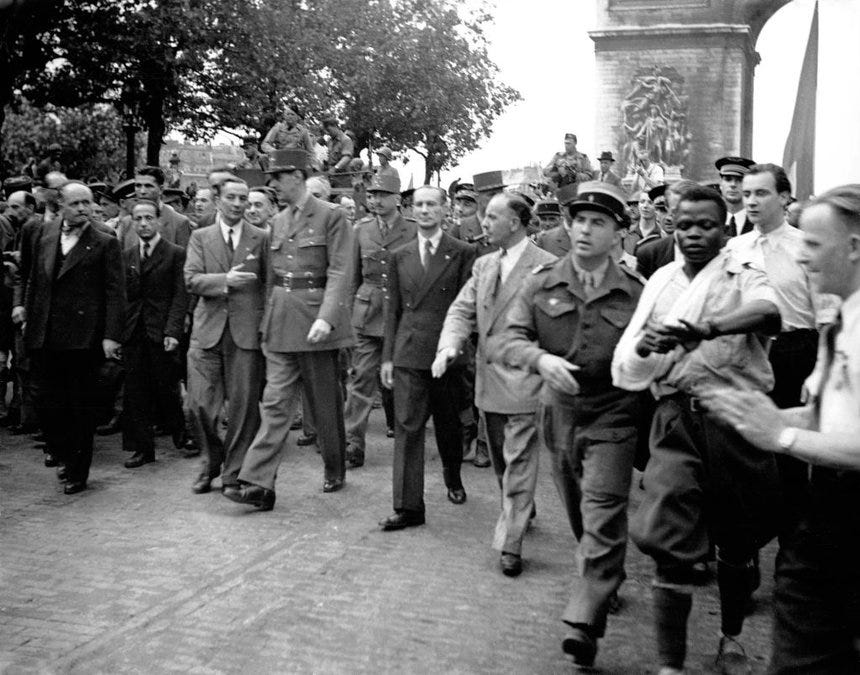Fifteenth #10: On Black presence, erased
How the normalisation of Black erasure reverberates into the present
Why an impulsive act of trespass by George Dukson in wartime Paris is representative of how Black presence has been continuously and systematically erased — resulting in dangerous legacies that trouble Black living today
📚 You can buy books mentioned in this newsletter from my page on Bookshop.org
🎉 Ever since I first encountered the Tupac hologram, I have been fascinated by digital existence and how we persist online after death. If you want to learn about where my thoughts have led, I will be presenting “Death, and how tech forgot about mortality” at ffconf in Brighton on Friday 8 November. I will be one of eight speakers at this one-day conference. Past talks are on their YouTube channel.

They didn’t want him there.
The liberation of Paris, 80 years ago in the summer of 1944, was met rapturously. A victory procession was planned. General de Gaulle was to lead the way, but in the weeks prior, the French authorities could not resolve a problem of their own making.
The Free French forces were not majority White — two-thirds were colonial troops, brought in from West Africa, the Caribbean, North Africa, and Pacific states. British and American authorities agreed to France’s request to assist in the ”blanchiment” (“whitening”). Black, Brown, and other colonial troops were to be barred. Syrian, Lebanese, and other North African troops who could pass as white were used to make up the numbers.
Enter Georges Dukson.
If you have never heard of Georges Dukson, that’s by design. In the post-war years, there have been extensive and coordinated efforts in Allied nations to ensure Black, South Asian, North African and other colonial troops would be quickly erased from the cultural memory of the First and Second World War narrative. In the many photos of the procession, you can see the lone Black figure of Dukson being jostled — his right arm in a sling from a bullet wound he received a few days earlier — many officials trying to accost or drag him away as De Gaulle is metres away. He is there.
Keep reading with a 7-day free trial
Subscribe to First & Fifteenth to keep reading this post and get 7 days of free access to the full post archives.


